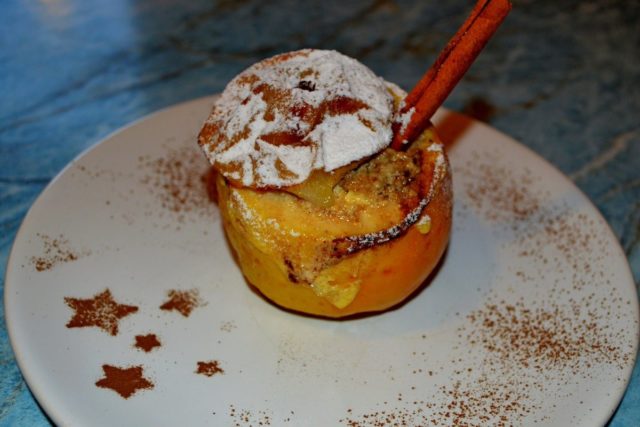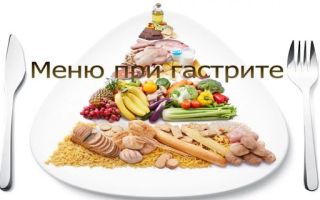Content
A diet for pancreatitis and gastritis is necessary for such pathologies, since it is able to relieve the digestive organs and stop the development of inflammatory processes. With an exacerbation of pancreatitis, gastritis, doctors advise a complete rejection of food for some time, and then prescribe a therapeutic diet.
Features of nutrition for gastritis and pancreatitis
With pancreatitis and gastritis, a diet is prescribed that takes into account the characteristics of these diseases. First of all, with inflammation of the pancreas and stomach, harmful foods must be excluded. This is the main point with any diet.
Among themselves, diets for pancreatitis and gastritis with high acidity have much in common. First of all, you need to exclude sour and fermented foods, for example, some fermented milk dishes, fruits and fresh vegetables, fermented foods. During this period, you need to include whole milk and milk porridge in the diet every day. A therapeutic diet for gastritis with low acidity should have a more gentle regime for the pancreas, but at the same time stimulate the stomach and its mucous membrane to increase secretion. In this case, milk should be replaced with fermented milk products, and porridge should be boiled in water.
Diet is the mainstay of therapy for pancreatitis and gastritis. A number of foods are excluded from the diet in order to reduce the load on inflamed organs. As a rule, pancreatitis occurs after the abuse of spicy, fried, fatty foods, alcohol. The disease is often accompanied by gastritis. As a result, the production of hydrochloric acid is disrupted, which affects all the main processes in the digestive tract. Thus, the features of the diet for pancreatitis and gastritis are as follows:
- food must be fractional, at least 5 times a day;
- meals should be consumed in small portions;
- do not eat a few hours before bedtime;
- food should be warm;
- you should not drink food with liquid;
- you need to develop a diet and adhere to it for a long time;
- with the help of a doctor, it is necessary to prepare approximate food options for a week, strictly observe it;
- food must be chewed thoroughly;
- you cannot eat dry food and on the run.

Such rules can be followed not only by gastroenterologist patients, but also by those who are trying to follow the norms of a healthy diet. The diet for pancreatitis and acute gastritis should be varied. All meals must be boiled or steamed. Preference should be given to recipes from those products that are approved for use. The prepared dishes should be gentle, the ingredients can be chopped with a blender so as not to irritate the mucous membrane.
Often, in addition to dietary food for gastritis and pancreatitis, the doctor prescribes herbal decoctions, since they have proven themselves well. The compositions relieve inflammation of the mucous membranes, have a healing effect. They are used in the form of tea and decoctions.Sometimes they contain additional substances that have an antispasmodic and choleretic effect. These herbs include St. John's wort, dog rose, plantain, yarrow.
In addition to a diet for pancreatitis and gastritis, the doctor prescribes medicines with enzymes in the composition. They help to fill the deficiency of nutrients, restore the work of the pancreas, stomach and bring all digestive processes back to normal.
Diet menu for gastritis and pancreatitis
Diseases such as pancreatitis and gastritis have a number of similar symptoms - nausea, vomiting, heaviness in the stomach, indigestion, lack of appetite. After examination, establishment of an accurate diagnosis, choice of therapy, the patient is prescribed diet No. 5. It is quite strict, but satisfies the needs of the inflamed organs - the pancreas and stomach.
Nutrition for exacerbation of gastritis and pancreatitis should be thought out. The acute phase of the disease is accompanied by severe pain in the back and epigastric region. The patient has a fear of eating, often nausea and vomiting. In the treatment of any pathologies from the gastrointestinal tract, diet is the main therapeutic measure. That is why diet number 5 implies not only a list of permitted and prohibited food products, but also methods of cooking, the number of meals, and the daily intake.

The main recommendations of diet number 5:
- baked, stewed, boiled and steamed dishes are allowed;
- at one time you need to eat no more than 200-250 g of food;
- it is forbidden to eat too cold and hot food;
- the interval in meals should be several hours;
- pasta should only be cooked in water;
- it is unacceptable to use dressings and seasonings in dishes;
- soups should be cooked exclusively in water;
- first courses should be mashed or in the form of a puree soup;
- cook porridge semi-liquid;
- you can make steam cutlets from fish or cook it only for steam;
- you need to cook steam cutlets, soufflé, casseroles from poultry meat;
- dairy products should be fat-free;
- vegetables should also be steamed, eaten in small portions;
- raw fruits are prohibited, it is better to make jelly, mousse, jelly from them;
- from drinks it is allowed to prepare decoctions, compotes, jelly;
- from sweets, small amounts of jam, marshmallows, marshmallows can be used.
Thus, diet therapy for pancreatitis and gastritis involves certain foods. Limiting the use of prohibited foods will benefit many other diseases of the digestive tract. A steamer, blender can help in organizing proper nutrition. With such a diet, you can not be afraid of exacerbation of gastritis and pancreatitis.
What can be done on a diet for gastritis and pancreatitis
Patients with exacerbation of gastritis and pancreatitis need to constantly adhere to a diet, monitor nutrition, the composition of meals, and the frequency of meals. At the same time, it is important to consume permitted food exclusively in the correct processing. Absolutely healthy people should also follow these recommendations.

Gastroenterologists recommend using the following foods for the diet in case of exacerbation of diseases:
- lean meat and fish, chicken, rabbit, turkey, boiled or steamed;
- first courses without rich broth, you can add cereals and noodles;
- whole grain bread yesterday, biscuits;
- small amounts of sunflower and butter;
- from cereals, you can buckwheat, oatmeal, crushed yachts, semolina, rice;
- baked vegetables - tomatoes, potatoes, pumpkin, cauliflower, zucchini, carrots;
- boiled eggs or in the form of an omelet;
- dairy products with a low percentage of fat;
- sweet ripe fruits are allowed;
- honey, jam, marshmallow in small quantities.
What is not allowed on a diet for gastritis and pancreatitis
It is worth mentioning prohibited foods for exacerbation of gastritis and pancreatitis. These include all fatty, salty, fried foods, all types of mushrooms, seeds and nuts. You should refrain from eating cabbage, sorrel, spinach, radish, radish, legumes. Banned coffee, tea, alcohol, spices and seasonings, as well as smoked foods, marinades and preservation.
An approximate meal plan for gastritis and pancreatitis for a week
Since in the acute form of pancreatitis and gastritis, severe pain is observed, the main goal of the diet is to reduce the production of gastric and pancreatic juice. This can be achieved by avoiding any food and bed rest. In this case, it is undesirable for the patient to even smell the food. During this period, the following scheme of a therapeutic diet will be required:
- hunger;
- gradual transition to nutrition;
- expansion of approved products;
- adding volume to food and increasing calories.

For a long time after an exacerbation of the disease, it will be necessary to spare the organs from mechanical and chemical effects on the mucous membranes. The first days of a hungry diet are allowed only to drink: mineral water, rosehip broth, weak tea. They need to be taken in small portions warm. The duration of fasting is set by the doctor based on the patient's condition.
After hungry days, frequent meals are needed in very small portions, starting from 50-100 g. This period lasts up to a week. The diet consists of boiled products of a semi-liquid consistency, while carbohydrates should be preferred. After 2-3 days, you can carefully introduce protein products: cottage cheese, steamed omelets, cereals in milk, cream soup from boiled mashed meat, the same vegetables, fish and meat soufflés, steam cutlets. After a few days, the food can be shredded. With this diet, food does not overstimulate the organs.
The food menu for gastritis and pancreatitis can and should be varied. In this case, it will be easier for the patient to adhere to the correct diet for a long time.
Monday:
- breakfast - semi-liquid milk porridge, weak tea;
- second breakfast - low-fat yogurt;
- lunch - mashed milk soup, steamed meat cutlet, liquid jelly from berries;
- afternoon tea - low fat kefir, biscuits;
- dinner - zucchini and boiled veal stew, dried fruit broth.
Tuesday:
- breakfast - rice porridge with dried fruits;
- second breakfast - baked apple;
- lunch - pumpkin puree soup, steamed or baked low-fat fish, fresh berry compote;
- afternoon tea - low fat milk;
- dinner - stewed meatballs, rosehip broth.
Wednesday:
- breakfast - steamed syrniki, compote from fresh allowed berries;
- second breakfast - low-fat kefir, biscuits;
- lunch - squash soup, steamed meat cutlet, green tea;
- afternoon tea is a permitted fruit;
- dinner - mashed potatoes with baked chicken breast, low-fat milk.

Thursday:
- breakfast - omelette in a double boiler, mineral water;
- second breakfast - low-fat curdled milk;
- lunch - carrot puree soup, chicken casserole, cocoa drink;
- afternoon tea - fruit jelly;
- dinner - noodles, baked rabbit meat.
Friday:
- breakfast - liquid semolina porridge, weak tea, bread and butter;
- second breakfast - vegetable salad, mineral water;
- lunch - noodles soup, chicken pudding, fruit drink;
- afternoon tea - low-fat kefir;
- dinner - cottage cheese casserole, dried fruit decoction.
Saturday:
- breakfast - soft-boiled eggs, tea;
- second breakfast - berry jelly, biscuits;
- lunch - boiled turkey meat, zucchini puree, kefir;
- afternoon tea - baked apple;
- dinner - boiled fish, carrot puree, unsweetened tea.
Sunday:
- breakfast - rice milk porridge, tea;
- second breakfast - cottage cheese with sour cream;
- lunch - chicken puree soup with breadcrumbs, steamed cutlet, buckwheat, dried fruit compote;
- afternoon tea - a drink made from cocoa;
- dinner - oatmeal jelly, baked zucchini, boiled beef.
Conclusion
Diet for pancreatitis and gastritis is one of the main therapeutic ways to establish digestion in the pancreas and stomach. Without diet, it will be difficult to stop the pathological processes in the inflamed mucous membrane. These diseases occur for various reasons, the most common of which is permanent errors in nutrition. Therefore, regular nutrition is required to maintain the health of the digestive system. A therapeutic diet should be supported by a competent therapy regimen and taking drugs containing enzymes.

